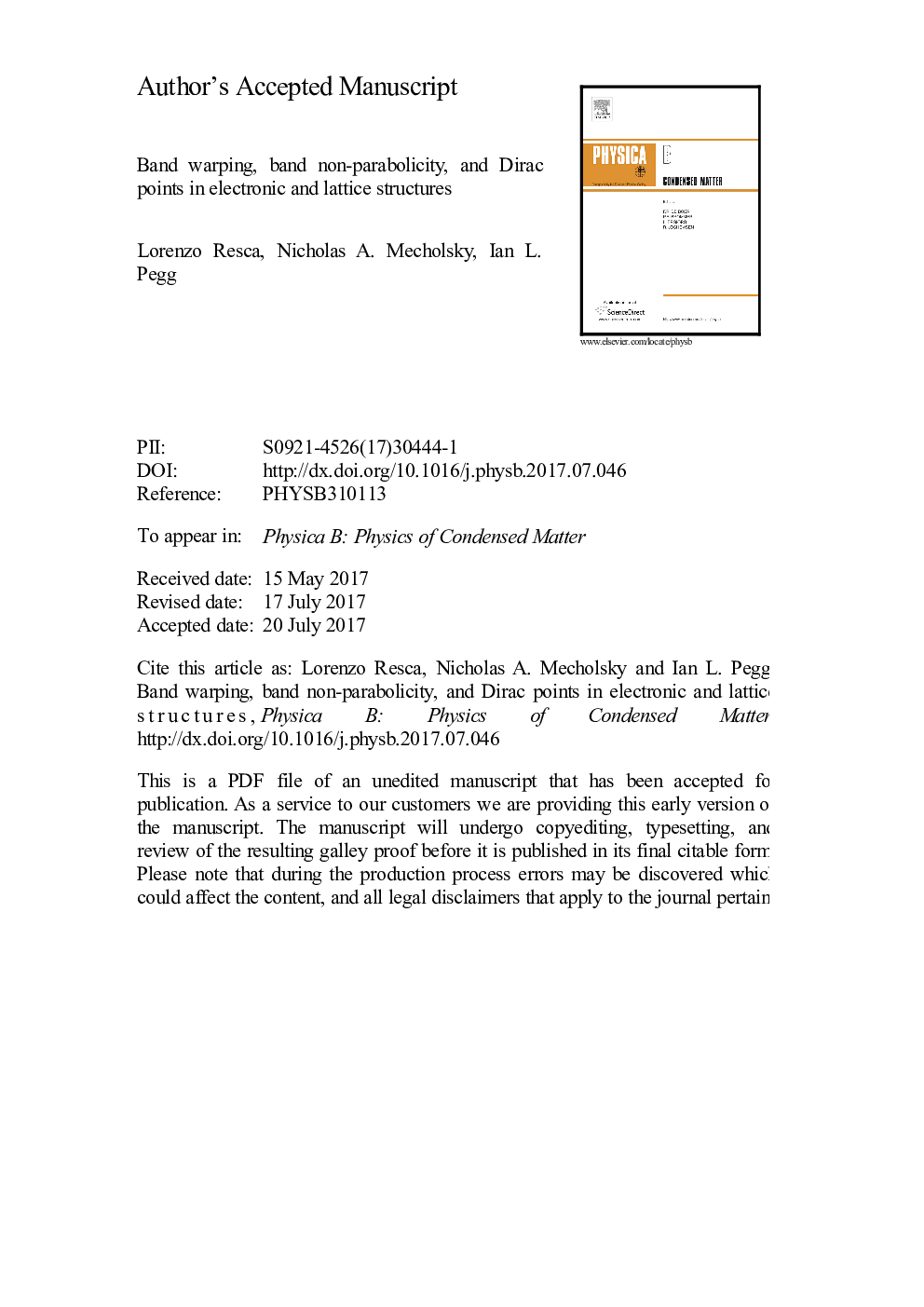| کد مقاله | کد نشریه | سال انتشار | مقاله انگلیسی | نسخه تمام متن |
|---|---|---|---|---|
| 5491767 | 1525127 | 2017 | 18 صفحه PDF | دانلود رایگان |
عنوان انگلیسی مقاله ISI
Band warping, band non-parabolicity, and Dirac points in electronic and lattice structures
ترجمه فارسی عنوان
غلطکبندی گروه، غلبه ناپذیر بودن گروه و دیراک در ساختارهای الکترونیکی و شبکه
دانلود مقاله + سفارش ترجمه
دانلود مقاله ISI انگلیسی
رایگان برای ایرانیان
کلمات کلیدی
تکان دادن گروه، غیر پارابولیسم، داریک نقطه، ساختار باند الکترونیکی اتصال محکم، تقریبا الکترون رایگان مدل،
موضوعات مرتبط
مهندسی و علوم پایه
فیزیک و نجوم
فیزیک ماده چگال
چکیده انگلیسی
We illustrate at a fundamental level the physical and mathematical origins of band warping and band non-parabolicity in electronic and vibrational structures. We point out a robust presence of pairs of topologically induced Dirac points in a primitive-rectangular lattice using a p-type tight-binding approximation. We analyze two-dimensional primitive-rectangular and square Bravais lattices with implications that are expected to generalize to more complex structures. Band warping is shown to arise at the onset of a singular transition to a crystal lattice with a larger symmetry group, which allows the possibility of irreducible representations of higher dimensions, hence band degeneracy, at special symmetry points in reciprocal space. Band warping is incompatible with a multi-dimensional Taylor series expansion, whereas band non-parabolicities are associated with multi-dimensional Taylor series expansions to all orders. Still band non-parabolicities may merge into band warping at the onset of a larger symmetry group. Remarkably, while still maintaining a clear connection with that merging, band non-parabolicities may produce pairs of conical intersections at relatively low-symmetry points. Apparently, such conical intersections are robustly maintained by global topology requirements, rather than any local symmetry protection. For two p-type tight-binding bands, we find such pairs of conical intersections drifting along the edges of restricted Brillouin zones of primitive-rectangular Bravais lattices as lattice constants vary relatively to each other, until these conical intersections merge into degenerate warped bands at high-symmetry points at the onset of a square lattice. The conical intersections that we found appear to have similar topological characteristics as Dirac points extensively studied in graphene and other topological insulators, even though our conical intersections have none of the symmetry complexity and protection afforded by the latter more complex structures.
ناشر
Database: Elsevier - ScienceDirect (ساینس دایرکت)
Journal: Physica B: Condensed Matter - Volume 522, 1 October 2017, Pages 66-74
Journal: Physica B: Condensed Matter - Volume 522, 1 October 2017, Pages 66-74
نویسندگان
Lorenzo Resca, Nicholas A. Mecholsky, Ian L. Pegg,
